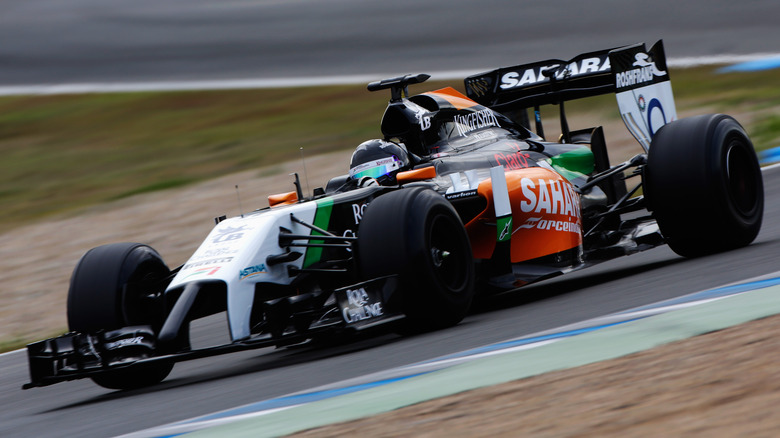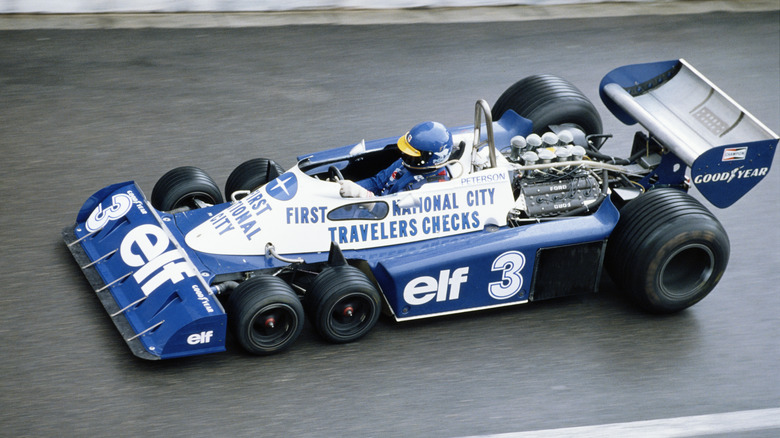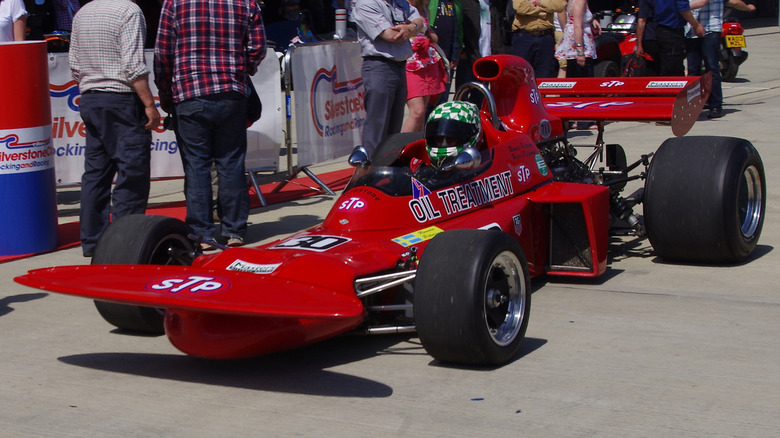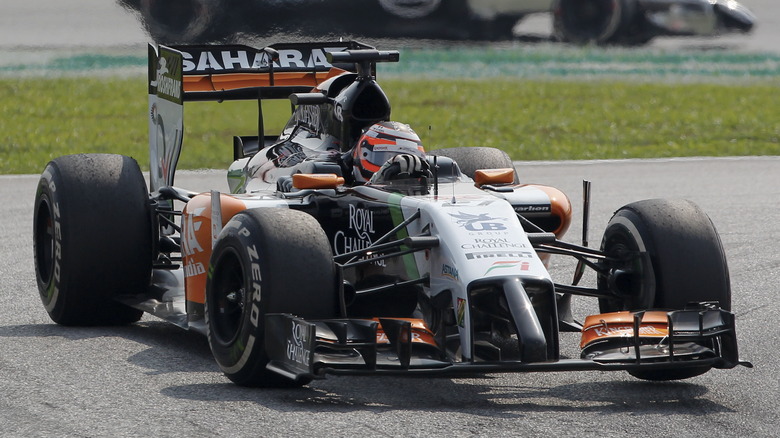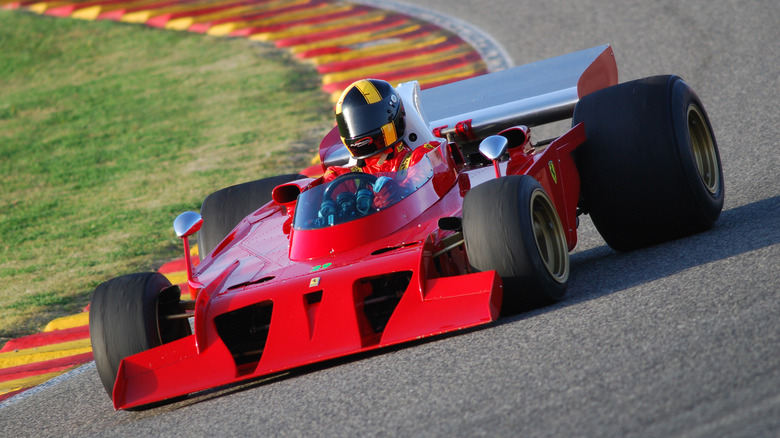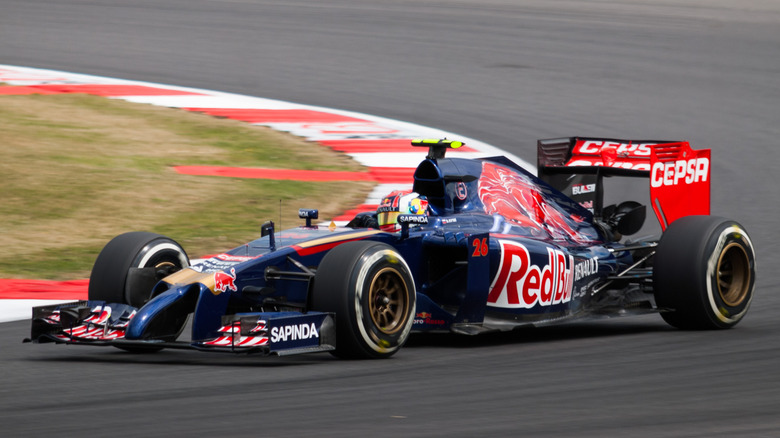5 Of The Worst-Looking F1 Cars Ever Designed
Being successful in Formula One means extracting the best performance from that season's ruleset, leading teams to try and think creatively in order to get an edge over their rivals. Sometimes, That unconventional thinking has brought us Formula One's fastest cars as well as some truly strange machines. Whether they're successful or not, many of these left-field ideas result in cars that don't look aesthetically pleasing. Some had endearing quirks, but others were just downright ugly.
There are plenty of awkward-looking F1 cars in the sport's history to pick from, and which one is ugliest comes down to personal taste. However, a handful of examples stick out from the rest as being particularly bad-looking designs, even if they some found success on track. We've rounded up some of the worst-looking F1 car designs from past seasons, with each one featuring at least one distinctive element that made it stick out from its contemporaries.
Tyrrell P34
One of the most famous unusual F1 car designs debuted at the 1976 Spanish Grand Prix and immediately turned heads. Rather than the conventional four-wheel design, the Tyrrell P34 featured two pairs of small wheels at the front of the car and a larger pair at the rear. The idea was conceived by designer Derek Gardner, who realized that having four wheels at the front of the car would result in superior front-end grip, which meant that less downforce-inducing aerodynamics would be needed. That effectively gave the car the equivalent of about a 40-horsepower boost compared to its rivals, although the design wasn't without its skeptics or faults. British racing legend Jackie Stewart reportedly choked on his drink when Gardner showed him plans for the car, and braking performance was an issue throughout the P34's competition history. The unique design also meant that Tyrrell had to petition Goodyear to make smaller front tires specially for the car.
Tyrrell unveiled the P34 for the fourth race of the season at Jarama, where Patrick Depailler qualified third but completed just 25 of 75 laps due to brake issues. Two weeks later, his teammate Jody Sheckter drove the car to a fourth-place finish in Belgium, and the next two races saw the two Tyrrell cars finish second and third at Monaco and one-two in Sweden. It might have been an innovative design, and a successful one at that, but the P34 was not a good looking car. Its six wheels and stubby nose — combined with the portholes in the side of the cockpit so that the driver could see the front wheels — all looked ungainly even by '70s F1 standards.
March 711
At the time of the 711's unveiling in 1971, March was still a new company, having only been in existence for two years and active on the track for a single season. The car's aerodynamic design was the work of Frank Costin, and it featured a strange new front wing designed to give the car an edge over its competition. Some observers thought that the front wing looked like that of the innovative Spitfire fighter plane, while others nicknamed it the "Tea Tray." The design proved an effective one, helping March's "Super Swede" Ronnie Peterson to multiple podiums, although never a win. It also served as the car in which a young Niki Lauda would make his first appearance in F1 at the Austrian Grand Prix.
However, much like the Tyrrell P34, the March 711's successful design wasn't necessarily an aesthetically pleasing one. It might have been awkward looking, but the 711 would turn out to be a much better car than its successor, the more conventionally styled March 721X. In an interview with Motorsport Magazine, Lauda said that the 721X was the "worst car [he] ever drove," explaining that "it had no downforce, it understeered, it oversteered, it was slow down the straight and the gearchange was awful." Ironically, March might actually have been better off sticking with the awkward-looking "tea tray" design of the 711.
Force India VJM07
New rules for the 2014 season saw the maximum allowed nose height lowered significantly from previous seasons, and that left teams scrambling to find a way to meet the new requirements. The result was that many teams fitted a proboscis nose that extended from the front of the car and dipped down so that its end met the new limit. All teams competing in the 2014 season struggled to incorporate the new design requirements to some degree, but a few cars ended up looking worse than others.
The Force India VJM07 is arguably one of the worst interpretations of the nose height rule, with the team almost completely redesigning the car from the previous year. The team's livery that season didn't do much to hide the new, ugly nose, instead leaving it as a prominent narrow black appendage that stuck out from the white and orange finish applied to the rest of the front end. Force India's car was far from the only ugly design that season, with the Caterham CT05 also sporting a similarly conspicuous nose appendage in response to the revised regulations.
Ferrari 312 B3 Spazzaneve
Ferrari has produced plenty of stunning cars over the decades, including these somehow overlooked models, but the 312 B3 Spazzaneve was not one of its better-looking race cars. Spazzaneve is the Italian word for snowplow, and the car got its nickname thanks to its unusual front end design. The car was an entirely new design for Ferrari that was created by Mauro Forghieri in 1972. With large intakes in the front wing and a shorter, more compact design intended to keep more of the car's weight inside its wheelbase, it was unlike any previous race car to come out of Maranello.
It was put through extensive testing by Ferrari and assessed by its factory drivers including Jacky Ickx, and provisionally entered into the 1972 Italian Grand Prix. However, negative feedback from the drivers including Ickx prompted Ferrari to change course at the last minute, switching the car out for its older B2 design come race day. In the end, the Spazzaneve would never actually line up on the grid, with Ferrari debuting a heavily revised — and very uncompetitive — version of the B3 the following season. Forghieri would be temporarily fired from Ferrari's F1 team for creating the Spazzaneve, but was later reinstated when the replacement car failed to live up to Ferrari's expectations. With the lessons learned from that fiasco, Forghieri developed a new B3 for 1974 that vaulted Ferrari back to second in the constructor's championship.
Toro Rosso STR9
Alongside the Force India VJM07 and Caterham CT05, another of the worst-looking cars from the 2014 season was the Toro Rosso STR9. Unlike the Force India livery designers, Toro Rosso's team didn't even try to hide their car's drooping nose by painting it black. Instead, the team simply embraced it as part of the new look, coloring it the same metallic blue as the rest of the car. They even accentuated it with a horizontal gold stripe that looked like a band-aid or anti-snoring strip across the car's nose. According to chief designer Luca Furbatto, the STR9 was the result of 18 months of design work, with virtually all parts of the car being new.
A car's looks don't matter much if its design translates to impressive on-track results, but the STR9 was far from an exceptional performer. Toro Rosso finished seventh out of 10 teams in 2014, without a single podium finish in 19 races. The team's best result that season was a sixth-place finish for Jean-Éric Vergne at the Singapore Grand Prix.
